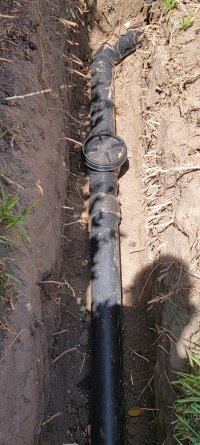Nope…it’s scalding. There should not be water in the pipe to freeze. Any water in the pipe will thaw ice.Any closer to grade I'd suspect it could freeze, we get a few 6-inch snow accumulation, that could be the reason?
Last edited:
Your premier resource for building code knowledge.
This forum remains free to the public thanks to the generous support of our Sawhorse Members and Corporate Sponsors. Their contributions help keep this community thriving and accessible.
Want enhanced access to expert discussions and exclusive features? Learn more about the benefits here.
Ready to upgrade? Log in and upgrade now.
Nope…it’s scalding. There should not be water in the pipe to freeze. Any water in the pipe will thaw ice.Any closer to grade I'd suspect it could freeze, we get a few 6-inch snow accumulation, that could be the reason?
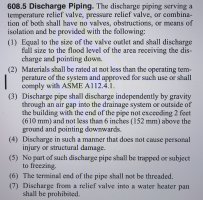
The pan would be overwhelmed in an instant. Pointless comes to mind.Interesting that CPC requires you do something to route the discharge to a drain or outside; IPC does not, you only need to get it close to the floor. #7 in CPC above is opposite of IPC which specifically allows discharge into the drip pan.
Now I can't figure out why CPC would disallow discharge into the pan.
PEX with insert fittings is allowed if the business end of the pipe is secured so it doesn't whip around like a snake when it goes off, and if the pipe diameter is upsized to accommodate the diameter reduction of the pipe at each fitting.Not sure if I understand the P2804.6.1 number 10 wording in regards to two times the discharge pipe diameter above the floor? Does this lead you to believe that PEX with insert fittings is now allowed to be used for the discharge pipe? Or is this another measurement for the length of pipe? Confused with this a bit.
I don't know if it would be overwhelmed or not. I've never seen one operate and couldn't find a video of one in operation. It doesn't drain the tank, it only relieves the pressure which may be a relatively small amount of water before it closes again.The pan would be overwhelmed in an instant. Pointless comes to mind.
The valve might be open until the temperature of the water drops. I too have never seen one opened. The pan is almost entirely filled with water heater with a narrow gap at the edge so I doubt it would do any good at all.....picture a garden hose for a fifteen second blast at full throttle.I don't know if it would be overwhelmed or not. I've never seen one operate and couldn't find a video of one in operation. It doesn't drain the tank, it only relieves the pressure which may be a relatively small amount of water before it closes again.
In any case, dumping it on the floor directly would have the same result.
The info is wrong, Eaton BR is OEM for BR loadcenters & Challenger, not classified for anyone, Eaton CL is UL classified for most competitive makes, never have read that GE is classified for any competitive makes. Siemens can be used for Murray, there is a letter from UL on that. Eaton has removed the Cutler-Hammer brand name & replaced it with Eaton, just as Siemens phased out the ITE brand in the past.Somebody should create a chart of what breaker works with what manufacturer. I have to wonder if all of these breakers are interchangeable.
View attachment 8903
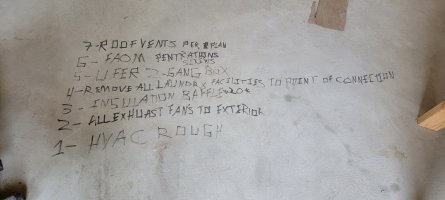
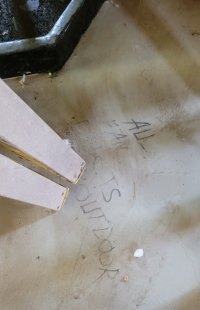
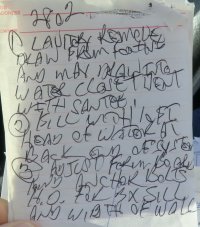
There was an inspector that used orange paint. He painted the floors with arrows. There was an upset contractor because the inspector made arrows on the garage slab. Big orange arrows.RED FLUORESCENT paint works great for some projects!View attachment 8942
Yeah, that'll do it. Also, don't mark the drywall, it'll likely bleed right through. That's an easier fix though.There was an inspector that used orange paint. He painted the floors with arrows. There was an upset contractor because the inspector made arrows on the garage slab. Big orange arrows.
I took pictures. A contractor would call me and I could direct him to the exact spot. More than one had to wonder how I knew so much detail.
No. But I did ask for a paint ball gun to mark hard to reach places. Request denied...I used spray paint on some OSB floor sheeting to indicate that there was no end nailing on the subfloor, the framer appreciated it but I was worried about the contrator blowing up! Bottom line the ends were nailed. I think the yard marking paint is more of a powder base and rubs off.
Anyone else use paint to mark rough-in framing discrepancies?
Yes we use a Blue color paint for framing. Orange, Red or Yellow are never used. I have had many owners call upset that there is something major wrong with the construction of their house. Then I spend time explaining to the owner that there is a minor correction that needs to be done, usually missed fasteners in the sheathing or hangers and the paint is there to aid the contractor in identifying where the corrections is and it provides proof when he sends a photo of the correction for the file. Since we went to Blue paint I don't get the questions from the owner anymoreAnyone else use paint to mark rough-in framing discrepancies?
One of the best screw patterns I have ever seen.....Chalk can smear when painted and also cause the paint to flake off the wall.
View attachment 8944
View attachment 8945
